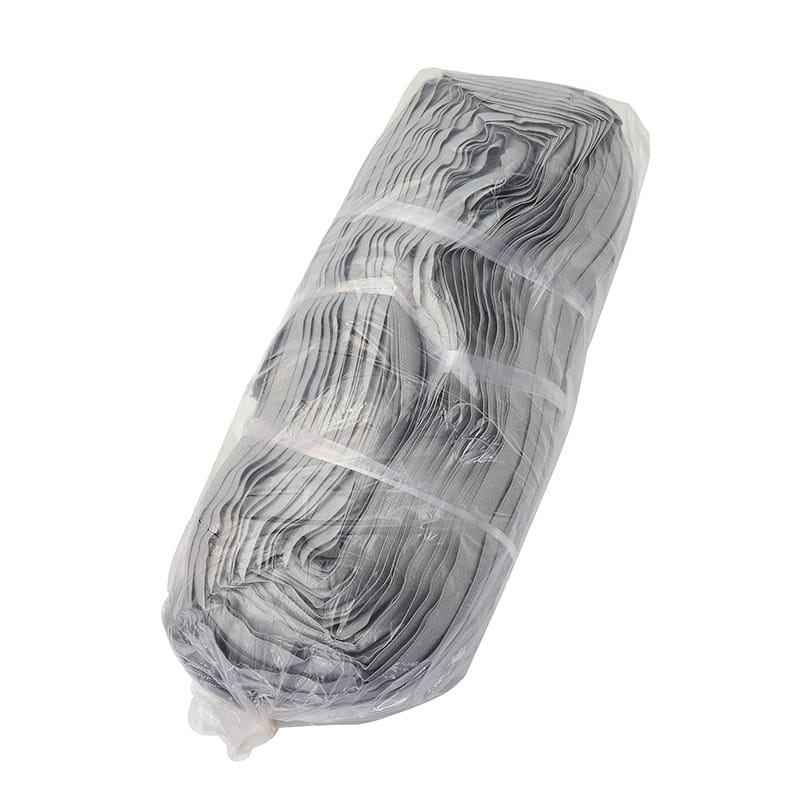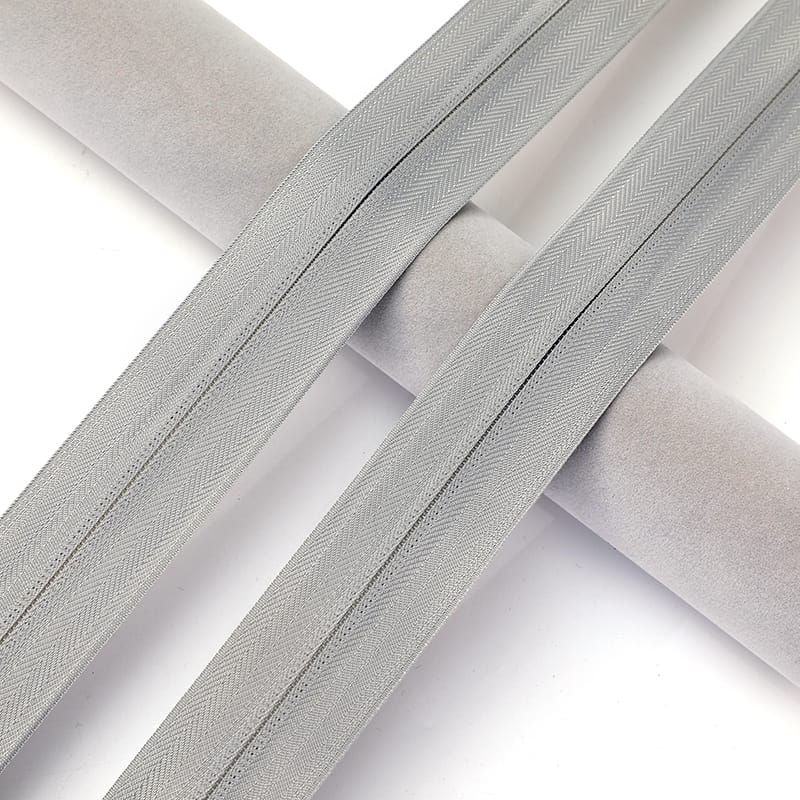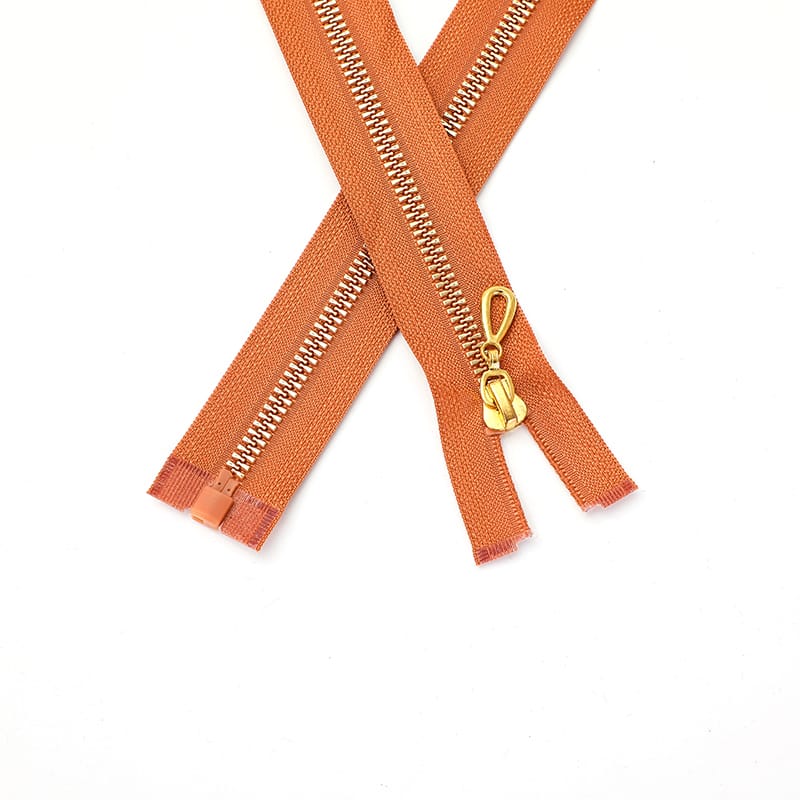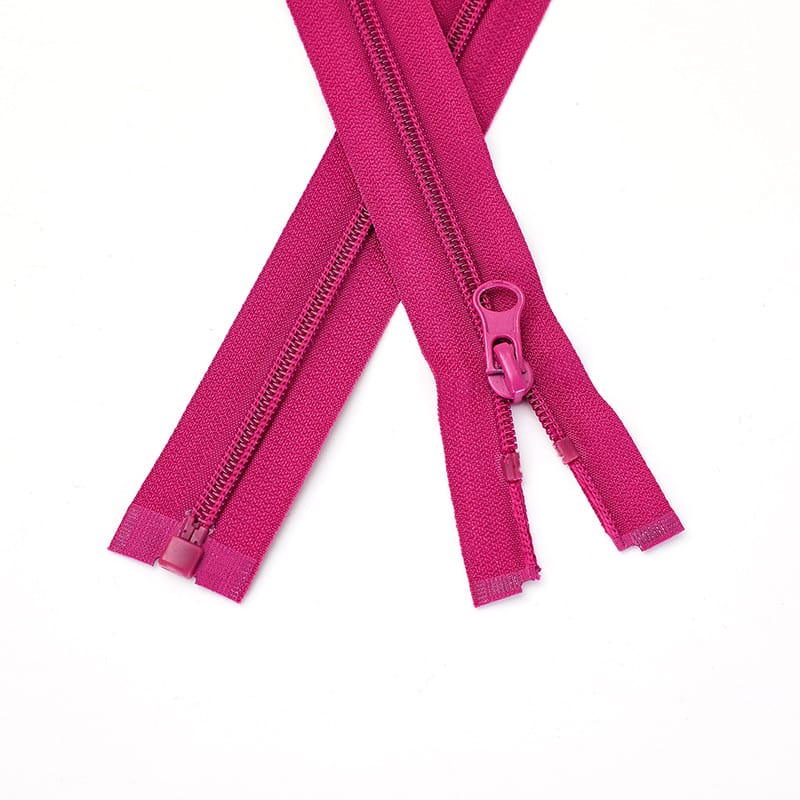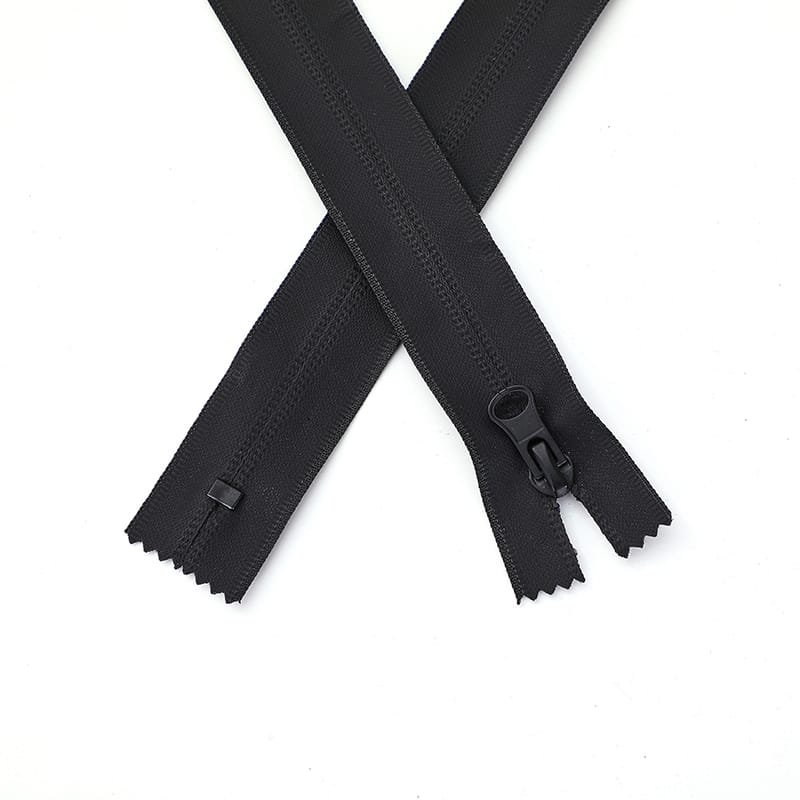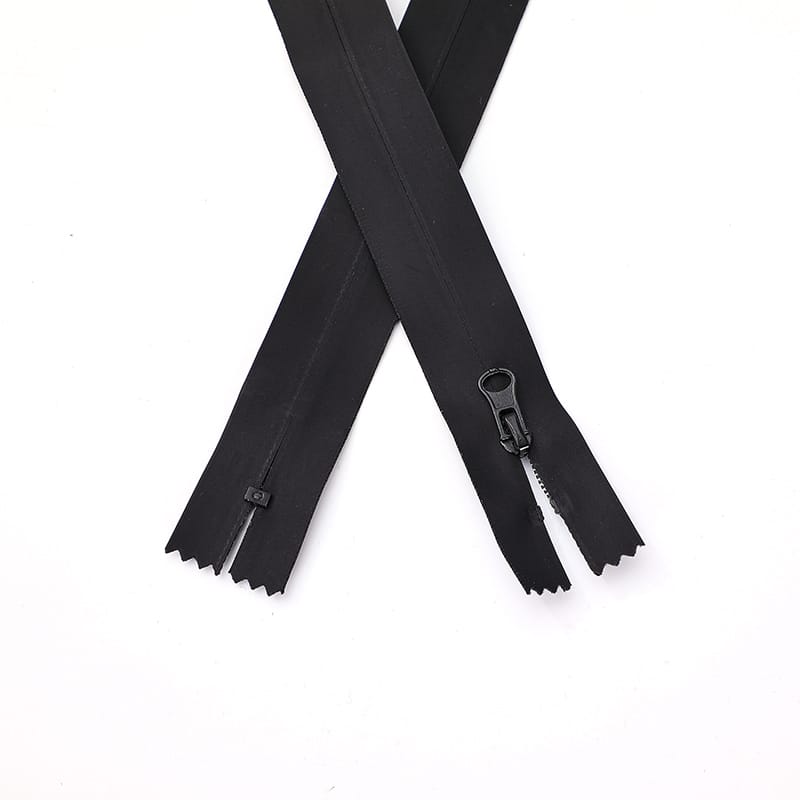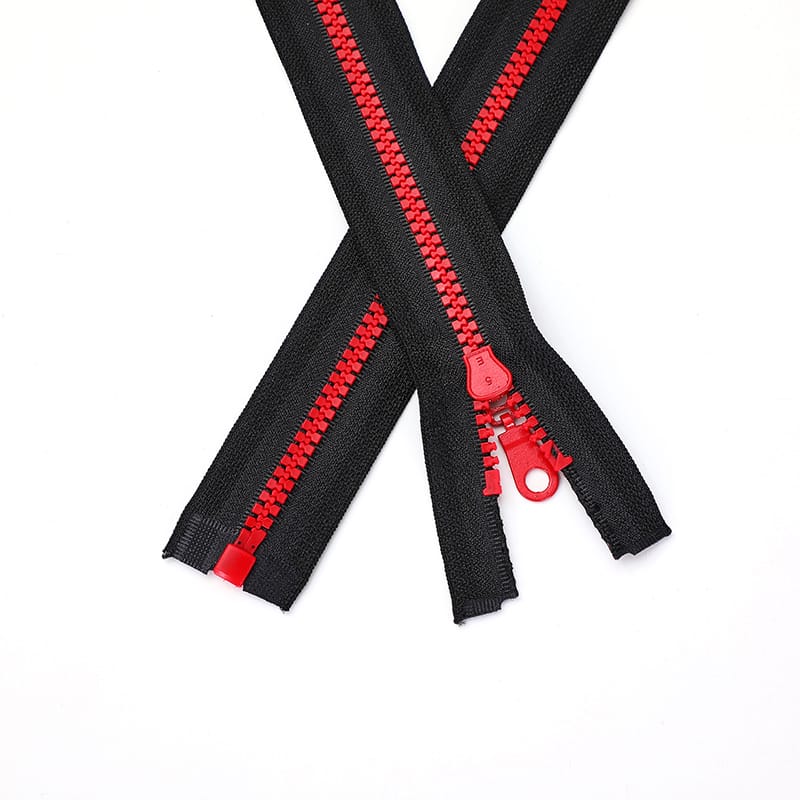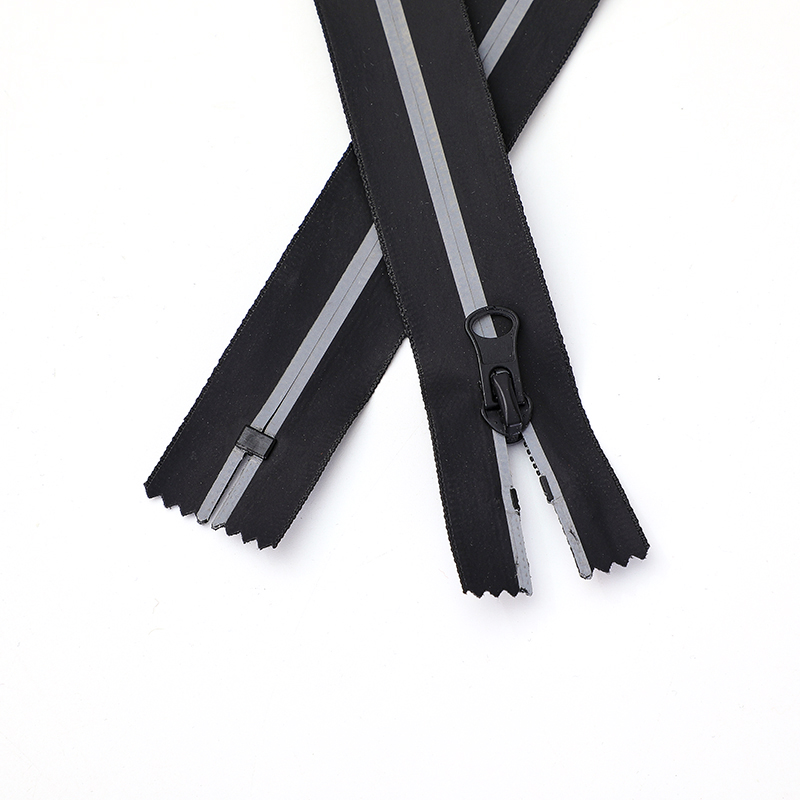NO.7 Nylon Long Chain With Dying
Product Detail
The NO.7 nylon zipper is made of the same components, but the size of the sprocket and chain belt is larger. The process of dyeing herringbone pattern is as follows:
1.First remove the zipper separately.
2. Prepare dyes and stains. Dyes and stains can be dosed in the desired color and amount of dyeing.
3. Add appropriate amount of water and dye to the vat to adjust to a suitable concentration. Note that you need to use a professional dyeing conditioner to control the depth of the color.
4. Put the zipper and the dye solution into the melting machine or furnace to heat and melt.
5. After melting, pat the zipper to unfold, then fold the chain belt on one side alternately inwards and outwards according to the edge of the herringbone pattern, fix it on the wall of the dyeing container, and then insert the chain teeth into the alternate sutures In the middle, the purpose of forming herringbone pattern can be achieved when dyeing.
6. Start dyeing, stir and observe the dyeing effect throughout the process.
7. At the end of the dyeing time, remove the zipper from the dye, remove excess dye and dye agent, and rinse with clean water.
8. Finally, hang the zipper to dry until it is completely dry, then it can be assembled and used.
Application
Nylon zippers rely on continuously arranged chain teeth to connect or separate items, and are now widely used in clothing, packaging, and tents
In addition, nylon zippers can also be used for various purposes, such as luggage, backpacks, leather goods, military equipment, etc. Its advantages are that it is not easy to rust and has good water resistance, so it is very suitable for outdoor sports and travel. At the same time, nylon zippers can also be designed to meet the needs and tastes of different customers through details such as color, length and slider, so it is becoming more and more popular in the market.

